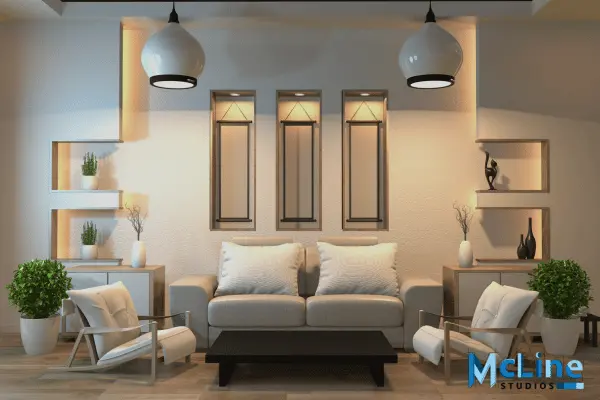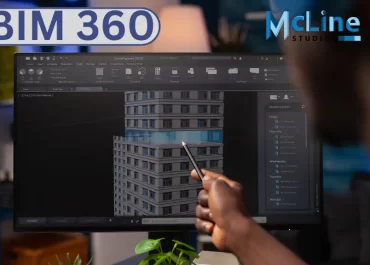Interior design drafting is an essential skill for aspiring designers to communicate their vision effectively. Whether hand-drafted or created with CAD software, these drawings allow you to convey the layout, dimensions, and details of a space. For beginners, it’s important to understand the fundamentals of drafting before diving into advanced techniques.
This includes learning about scale, symbols, dimensions, and views. With the right mindset and practice, anyone can become proficient at drafting. The key is having an eye for spatial relationships, precision, and creativity. In this comprehensive guide, we will cover everything you need to know as a novice.
We will delve into the symbiotic relationship between creativity and technical proficiency, emphasizing the importance of clear communication between designers, clients, and contractors. Whether you’re an aspiring interior designer or a homeowner looking to enhance your understanding of design processes, this beginner’s guide is your key to unlocking the world of interior design drafting with clarity and confidence.
What is Interior Design Drafting?
Interior design drafting is a crucial aspect of the interior design process, involving the creation of detailed and precise technical drawings that serve as a blueprint for the execution of design concepts. This specialized form of drafting focuses on translating the imaginative vision of an interior designer into tangible, measurable plans that guide construction or renovation projects.
Drafting in interior design typically includes floor plans, elevations, sections, and details, providing a comprehensive view of the spatial layout, furniture placement, and architectural elements within a space. These drawings serve as a communication tool between designers, clients, and contractors, ensuring a clear and unified understanding of the envisioned design.
Accuracy and attention to detail are paramount in interior design drafting, as the drawings guide various professionals in the implementation of the design. Advanced computer-aided design (CAD) software is often employed to create these drawings, allowing for greater precision, flexibility, and ease of revisions.
Ultimately, interior design drafting is an essential step in the realization of aesthetically pleasing, functional, and harmonious interior spaces, bridging the gap between creative vision and practical execution in the field of interior design.
Importance of Interior Design Drafting
Interior design drafting plays a crucial role in the creation and execution of well-designed and functional spaces. It serves as the foundational step in the interior design process, providing a detailed and visual representation of the designer’s ideas before they are brought to life. The importance of interior design drafting can be highlighted in various aspects:
Visualization and Conceptualization
Interior design drafting allows designers to translate their conceptual ideas into tangible visuals. By creating detailed floor plans, elevations, and 3D renderings, designers can effectively communicate their vision to clients, contractors, and other stakeholders. This visualization aids in ensuring that everyone involved in the project has a clear understanding of the design concept.
Space Planning and Functionality
Drafting is essential for proper space planning and utilization. Interior designers use drafting techniques to map out the arrangement of furniture, fixtures, and other elements within a space. This process helps to optimize the functionality of the space, ensuring that it meets the client’s needs and requirements while adhering to design principles.
Communication and Collaboration
Interior design drafting serves as a common language for communication between designers, clients, architects, and contractors. Clear and accurate drawings help in avoiding misunderstandings and misinterpretations. This collaborative approach ensures that all stakeholders are on the same page, leading to smoother project execution.
Technical Precision
Drafting involves attention to detail and technical precision. Accurate measurements, scale drawings, and specifications are critical for the successful implementation of a design. Interior design drafting helps in capturing these details, ensuring that the construction or renovation process aligns with the intended design.
Cost Estimation and Budgeting
Drafting is instrumental in estimating costs and budgeting for a project. Through accurate drawings, designers can assess the quantity and specifications of materials needed, helping clients and project managers establish realistic budgets. This proactive approach contributes to efficient project management and cost control.
Difference Between Interior Design and Interior Drafting

Interior design and interior drafting are related fields within the broader realm of interior architecture and design, but they involve distinct tasks and skill sets. Here’s a breakdown of the key differences between interior design and interior drafting:
Scope and Focus
– Interior Design: This encompasses the overall planning and creative design of interior spaces. Interior designers work with clients to understand their needs and preferences, creating aesthetically pleasing and functional designs. They consider aspects like color schemes, furniture selection, lighting, spatial arrangements, and overall atmosphere.
– Interior Drafting: This involves the technical and detailed representation of the design plans. Drafting focuses on creating accurate and precise drawings that communicate the design concept effectively. This includes floor plans, elevations, sections, and other technical drawings.
Creativity vs. Technical Skills
– Interior Design: Creativity and a strong sense of aesthetics are crucial for interior designers. They need to conceptualize and visualize spaces, considering both form and function. Designers often use software tools for conceptualizing and presenting their ideas.
– Interior Drafting: This involves a higher level of technical proficiency. Draftsmen use tools like AutoCAD or other drafting software to create detailed and precise technical drawings. Attention to detail and accuracy are paramount in this aspect of the process.
Client Interaction
– Interior Design: Designers work closely with clients to understand their preferences, lifestyles, and requirements. Communication and interpersonal skills are essential to convey design ideas and ensure that the final design aligns with the client’s vision.
– Interior Drafting: While there may be some communication with clients, the focus is primarily on translating the designer’s vision into detailed drawings that contractors and builders can follow. Draftsmen need to understand the technical aspects of construction and materials.
Collaboration
– Interior Design: Interior designers collaborate with various professionals, including architects, contractors, and furniture suppliers. They play a crucial role in coordinating and overseeing the implementation of the design vision.
– Interior Drafting: Draftsmen collaborate with designers to translate their ideas into technical drawings. They also work with contractors and builders to ensure that the construction process aligns with the drafted plans.
Conclusion
To conclude, Interior design drafting is an essential skill for aspiring interior designers to master. With practice and dedication, anyone can learn the fundamentals of hand drafting and CAD software to create beautiful and functional space plans.
Once you understand the basic techniques, you can start drafting layouts for your own home or begin offering services as a professional designer.
If you’re looking to take your next interior design project to the next level. This is where McLine Studios excels as a beacon of expertise in interior design drafting services. With a commitment to precision, innovation, and client satisfaction, McLine Studios stands out as a trusted ally for turning your design dreams into tangible, stunning realities.




